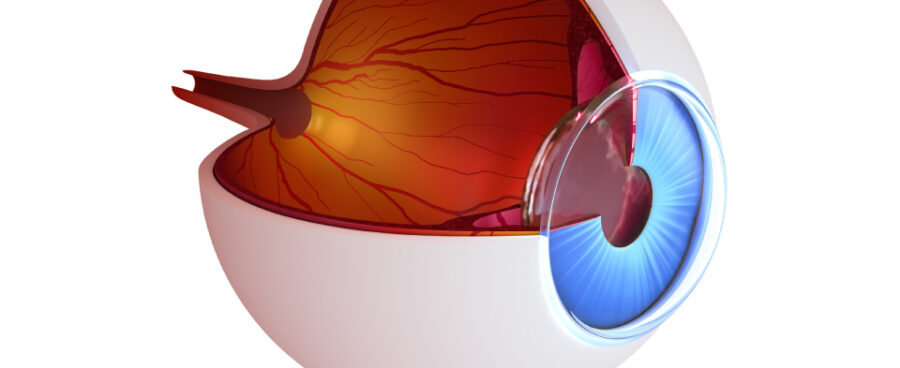The eye is like a camera with lenses at the front (cornea and natural crystalline lens) and a film at the back (retina). To have clear vision the light must be perfectly focused on the retina.
Two thirds of the focus is provided by the cornea and one third by the lens. Until our mid-forties the lens is able to change its power to focus for near and distance.
The inner workings of the human eye are complex, but at the same time, fascinating. The eye is easy to understand, if you think of it as a camera. When you take a picture, the lens in the front of the camera allows light through, and focuses that light on the film. When the light hits the film, a picture is taken. The eye works in much the same way. In a healthy eye, the lens is clear, and allows light to pass through. Light is focused by the cornea and lens, onto a thin layer of tissue called the retina. The retina works like the film in a camera. When light hits the retina, tiny cells collect the light signals, and convert them into electrical signals, which are then sent through the optic nerve, and to the brain, where they are processed into the images we see.
Myopia (short-sightedness) is when your eye naturally focuses close to you but is not able to focus on distant objects. Glasses or contact lenses are needed to see in the distance although you may be able to read things close-up without lenses. Glasses for myopia tend to make things seem smaller if you look through them.
Hyperopia (long-sightedness) is when you need glasses or contact lenses for both distance and near vision. There is generally no point at which you have clear reading vision without lenses. Glasses for hyperopia make things seem larger if you look through them.
Astigmatism is when the curve of the front of the eye is different on one direction or axis compared with the other (a little like a rugby ball rather than a football). Astigmatism is often present in combination with myopia or hyperopia. Myopia, hyperopia and astigmatism are measured in a unit called ‘dioptres’.
Presbyopia is when the eyes lose the ability to change focus between distance and near due to a hardening of the natural lens. This is a natural process that generally begins in the mid-forties. Presbyopia becomes noticeable when you have to hold print further away to read and eventually reading glasses, bifocals or varifocals are needed.
Laser refractive surgery is able to reshape the cornea to correct myopia, hyperopia and astigmatism and reduce the need for glasses or contact lenses. Laser refractive surgery is not currently able to reverse the effects of presbyopia although techniques such as ‘monovision’ (correcting one eye to focus in the distance and the other to focus nearer) can reduce the need for reading glasses.

